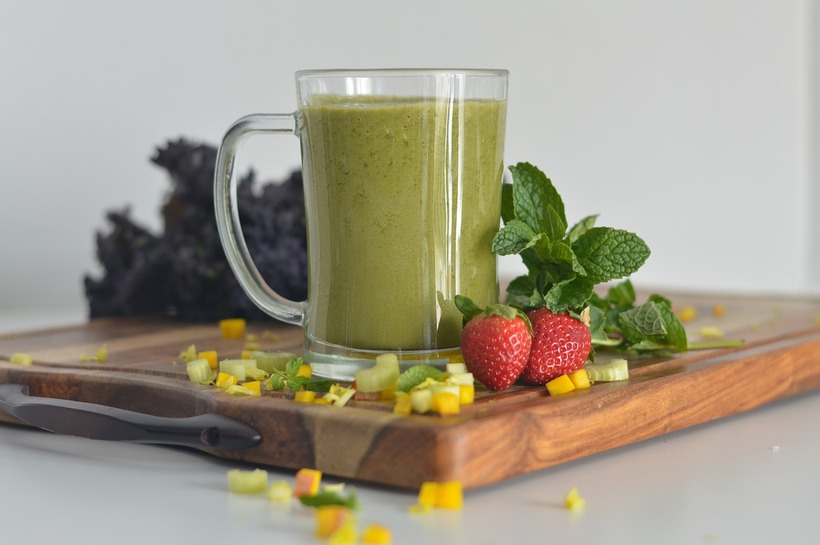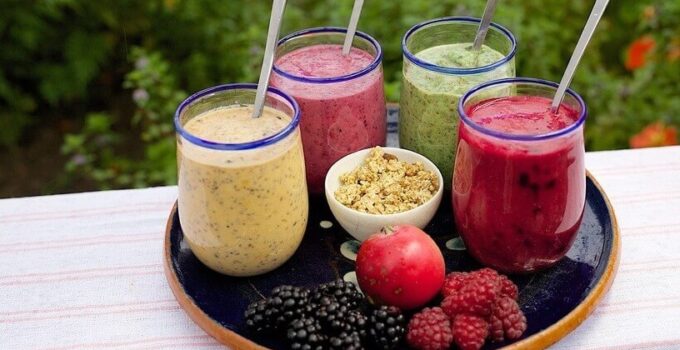When it comes to enjoying a smoothie, timing can play a crucial role in maximizing its benefits for your health and wellness. The question of when is the best time to drink a smoothie is one that often arises. Let’s explore the different options and factors to consider to help you make an informed decision.
Table of Contents
What is the Best Time to Drink a Smoothie?
Discover the optimal moments to enjoy a refreshing smoothie and make the most out of its nutritional benefits. From jump-starting your mornings to revitalizing your post-workout routines, we’ll explore when and how smoothies can be incorporated into your daily routine. Get ready to learn about the ideal timing for that pre-workout energy boost, a satisfying afternoon pick-me-up, or a refreshing evening treat. Excite your taste buds and nourish your body by finding the perfect time to savor a delicious smoothie.
Morning
When choosing the best time to drink a smoothie, the morning is an ideal choice. Drinking a smoothie in the morning provides a nutritious and energizing start to your day. By consuming a smoothie with nutrient-dense ingredients like fruits, vegetables, and protein sources, you can boost well-being and enhance proficiency throughout the day.
In the morning, your body needs fuel after an overnight fast. A smoothie can provide essential nutrients, vitamins, and minerals your body requires for optimal functioning. The high water content in smoothies helps hydrate your body, which is crucial after sleep.
To maximize the benefits of a morning smoothie, choose a variety of nutrient-dense ingredients like leafy greens, berries, and a protein source such as Greek yogurt or nut butter.
Pre-Workout
When preparing to exercise, it is important to consider the following factors to enhance your workout experience:
- Nutrition and Energy Needs: It is essential for a pre-workout smoothie to provide the necessary nutrients and energy. You can achieve this by including carbohydrate-rich ingredients such as bananas or berries.
- Timing: Give your body ample time to digest the smoothie before you start your workout. Aim to consume it around 30 minutes to an hour before exercising to avoid any potential discomfort.
- Hydration: Remember to stay properly hydrated before beginning your workout. You can enhance the hydration aspect of your smoothie by adding coconut water or a splash of regular water.
- Protein: Adding protein to your pre-workout smoothie can greatly support muscle recovery and growth.
Post-Workout
– Replenish nutrients: A post-workout smoothie replenishes lost nutrients, such as carbohydrates for glycogen levels and protein for muscle repair and growth.
– Quick absorption: Consuming a post-workout smoothie allows for fast absorption of nutrients. Blending fruits and vegetables breaks down their cellular structure, making it easier for the body to digest and absorb essential vitamins, minerals, and antioxidants.
– Muscle recovery: Protein in post-workout smoothies aids in muscle recovery and growth by repairing damaged muscle tissues and promoting the synthesis of new muscle proteins.
– Hydration: Exercise can cause dehydration, and a post-workout smoothie can help rehydrate the body. Including hydrating ingredients like coconut water or adding ice cubes to the smoothie replenishes lost fluids.
– Energy replenishment: After a workout, the body needs to replenish energy stores. Including carbohydrates in a post-workout smoothie restores energy levels and prevents fatigue.
– Satiety: A post-workout smoothie helps curb post-exercise hunger.
Afternoon Snack
The afternoon snack is a popular time to drink a smoothie. It can boost energy and satisfy hunger between lunch and dinner. Here are some factors to consider for maximizing the benefits of an afternoon snack smoothie:
- Choose nutritious ingredients: Opt for nutrient-dense fruits, vegetables, and other ingredients like spinach, berries, Greek yogurt, and almond butter. These provide essential vitamins, minerals, and antioxidants to keep you nourished throughout the day.
- Balance macronutrients: Include a combination of carbohydrates, protein, and healthy fats in your smoothie to promote satiety and sustained energy.
- Personalize according to taste: Customize your afternoon snack smoothie to your preferences. Experiment with different flavors and textures to make it enjoyable and satisfying.
- Listen to your body: Pay attention to how your body responds to the smoothie. If you feel energized and satisfied, it’s a good choice for an afternoon snack.
By considering these factors, you can maximize the benefits of your afternoon snack smoothie and enjoy sustained energy and nourishment.
Evening
In the evening, incorporating a smoothie can be a nutritious and refreshing way to end your day. Consider the following factors when including smoothies into your evening routine:
1. Satiety: Opt for a smoothie that includes protein and healthy fats to help you feel satisfied throughout the evening.
2. Digestion: Choose ingredients that are easy to digest, such as blended fruits and vegetables, as our digestion naturally slows down in the evening.
3. Nutrient density: Make sure your smoothie is filled with nutrient-dense ingredients like leafy greens, berries, and nuts to provide essential vitamins and minerals.
4. Sleep quality: Be mindful of ingredients that may have stimulatory effects, such as caffeine or sugary additives, which can disrupt a good night’s sleep.
For maximum benefit, try incorporating this pro-tip: Experiment with adding ingredients like chamomile tea or tart cherry juice to your evening smoothie.
Factors to Consider When Choosing the Best Time
When it comes to choosing the best time to drink a smoothie, there are several factors to consider. In this section, we’ll explore a few key aspects that can help you make an informed decision.

From your goals and objectives to your nutrition and energy needs, as well as digestion and absorption, we’ll dive into how these elements influence the timing of your smoothie consumption. So, grab your blender, because we’re about to uncover the secrets behind the ideal smoothie moment!
Goals and Objectives
When drinking a smoothie, it’s important to consider your specific goals and objectives and what you hope to achieve. Here are some goals and objectives to keep in mind:
– Weight loss: Choose a smoothie with a balance of protein, fiber, and healthy fats to feel full and satisfied while providing essential nutrients. This will help you in achieving your weight loss goals. In case you are struggling to lose weight, you may check when the best time of day to take Naltrexone for weight loss is.
– Muscle gain: Opt for a smoothie with a higher protein content to support muscle repair and growth.
– General health and well-being: Enhance overall health with smoothie ingredients rich in vitamins, minerals, and antioxidants. Examples include fruits, vegetables, leafy greens, chia seeds, and spirulina. This will contribute to your general health and well-being.
– Energy and focus: Boost energy levels and cognitive function with brain-boosting ingredients like avocados, nuts, berries, and matcha powder.
Nutrition and Energy Needs
The best time to drink a smoothie depends on your nutrition and energy needs. Here is a comparison of factors to consider:
| Factor | Nutrition and Energy Needs |
| Goals | Consider weight loss, muscle gain, or overall health improvement. Adjust smoothie ingredients accordingly. |
| Nutritional Content | Ensure your smoothie has a balanced combination of carbohydrates, proteins, and fats to meet your energy needs. |
| Timing of Workouts | Before and/or after workouts, consume a smoothie with enough carbohydrates and protein to support energy levels and muscle recovery. |
| Schedule and Activities | Consider your daily routine. A smoothie can be a quick, nutritious meal in the morning or a filling snack in the afternoon. |
| Digestion and Absorption | Some individuals digest and absorb nutrients better in the morning, while others prefer the afternoon or evening. |
Understanding your nutrition and energy needs can help you determine the best time to drink a smoothie. Personalize your choices based on your goals and preferences, and listen to your body to find the most suitable timing. Experiment to find what works best for you!
Personally, a nutrient-rich smoothie in the morning improved my energy levels and focus throughout the day. By including fruits, vegetables, and plant-based protein, I met my nutritional needs while enjoying a delicious meal. Having a smoothie as a post-workout snack enhanced my muscle recovery and provided the necessary nutrients to fuel my body after intense exercise. It’s amazing how a simple smoothie can positively impact nutrition and energy levels!
Digestion and Absorption
Digestion and absorption are crucial processes in the body when it comes to consuming a smoothie. When we consume a smoothie, our body undergoes digestion, breaking down the nutrients present in the smoothie so that they can be absorbed and utilized effectively.
The process of digestion begins in the mouth, where the enzymes found in saliva start breaking down the carbohydrates present in the smoothie. Once the smoothie reaches the stomach, it encounters stomach acid and digestive enzymes that further aid in its breakdown.
After the stomach, the partially digested smoothie enters the small intestine, where the nutrients present in it are absorbed into the bloodstream. These nutrients then play a vital role in supporting overall health and helping different body cells function optimally.
To optimize the processes of digestion and absorption, it is advisable to consume smoothies at the appropriate time. Having a smoothie on an empty stomach, such as in the morning or as a snack, can enhance digestion and absorption since there are no other foods competing for the digestive process. It is beneficial to include a balanced combination of macronutrients in the smoothie, as this can support digestion and ensure that nutrients are properly absorbed.
Incorporating ingredients like ginger or pineapple in your smoothie can aid in digestion and absorption. They contains natural enzymes that facilitate the breakdown of nutrients. Chewing your smoothie slowly can stimulate the release of digestive enzymes in your mouth, ultimately improving the overall digestion process.
Tips for Maximizing the Benefits of Drinking Smoothies
Looking to make the most of your smoothie experience? Look no further! This section has got you covered with some awesome tips to maximize the benefits of drinking smoothies.

Discover the art of choosing nutrient-dense ingredients, striking the perfect balance of macronutrients, personalizing your blend to suit your preferences, and most importantly, listening to your body’s needs. Get ready for a whole lot of smoothie goodness coming your way!
Choose Nutrient-Dense Ingredients
Some options to consider include:
– Leafy greens: Spinach, kale, and Swiss chard are packed with vitamins, minerals, and antioxidants.
– Fruits: Berries like blueberries, strawberries, and raspberries are rich in antioxidants. Bananas, mangoes, and apples add natural sweetness and essential vitamins.
– Protein: Incorporate a scoop of protein powder for a feeling of fullness.
– Healthy fats: Avocado, nut butters, and chia seeds are excellent sources of omega-3 fatty acids and provide creaminess.
– Superfoods: Boost the nutritional content and gain unique health benefits with additions like spirulina, maca powder, or acai berries.
– Liquid base: Use water, coconut water, almond milk, or any type of milk as the smoothie base.
By choosing nutrient-dense ingredients, your smoothie will taste delicious and provide a wide range of vitamins, minerals, and antioxidants to support your overall health.
Balance Macronutrients
To optimize smoothie benefits, balance macronutrients. Incorporate protein, carbohydrates, and healthy fats in your smoothie.
Macronutrient Description
Protein – Builds and repairs tissues, aids muscle recovery, and promotes satiety.
Carbohydrates – Provides energy for your body and brain and supports exercise performance.
Healthy Fats – Essential for nutrient absorption, hormone production, and brain function.
Strike a balance between macronutrients in your smoothie. Aim for around 20-30% of calories from protein, 40-50% from carbohydrates, and 20-30% from healthy fats. Adjust these percentages based on your needs and goals.
By balancing macronutrients, ensure a well-rounded meal replacement or snack with sustained energy, nutritional support, and goal achievement.
Personalize According to Preferences
Drinking smoothies requires personalization according to your preferences. This includes tailoring the ingredients and flavors to suit your taste and dietary needs.
If you are a fruit lover, you can choose from a variety of fresh or frozen fruits such as berries, bananas, or mangoes. For those who enjoy vegetables, you can incorporate greens like spinach or kale to add nutrients.
To cater to your flavor preferences, if you have a sweet tooth, you can add natural sweeteners like honey or maple syrup. If you prefer a tangy flavor, you can add citrus fruits such as lemons or oranges.
In order to further personalize your smoothie, you can incorporate superfoods like chia seeds, flaxseeds, or protein powders based on your nutritional needs and goals. If you prefer a creamy texture, you can add ingredients like yogurt, nut butter, or avocado. On the other hand, if you prefer a lighter consistency, you can use almond milk, coconut water, or herbal tea as the base.
Creating a personalized smoothie allows you to enjoy a delicious drink that caters specifically to your preferences and provides the desired nutrients and flavors. Feel free to experiment with different combinations to find what works best for you. There are no set rules for smoothie-making, so get creative and have fun with the ingredients.
Listen to Your Body
Listen to your body when drinking smoothies. Pay attention to hunger cues, digestive comfort, energy levels, and activity level.
- Pay attention to hunger levels and drink a smoothie when hungry to satisfy your body’s need for nutrients and energy.
- If you experience discomfort like bloating or indigestion after drinking a smoothie, adjust the ingredients accordingly.
- Notice how you feel after drinking a smoothie. If it boosts your energy and keeps you energized throughout the day, it’s a good indicator of consuming it at the right time for your body.
- Consider your daily activities and when you would benefit most from the nutrients and energy provided by a smoothie. For example, if you have a morning workout, a pre-workout smoothie might be ideal to fuel your exercise.
Remember, everyone’s body is unique, so listen to your own body’s signals and adjust the timing of your smoothie consumption accordingly. Experiment with different times of the day and observe how your body responds.
Frequently Asked Questions
When is the best time to drink a smoothie?
The best time to drink a smoothie is in the morning, either 1 hour before a workout or directly after. It can serve as a breakfast replacement and provide fuel for the day.
Can a smoothie be consumed during lunchtime?
While lunchtime is better for chewing food and getting in raw veggies for texture and crunchiness, a juice can be consumed alongside lunch, but not as a replacement. A lunchtime juice can include ingredients like spinach, romaine, dandelion greens, apple, lemon, and ginger.
Is it recommended to have a smoothie as a snack?
Yes, having a smoothie as a snack is a healthier choice instead of opting for something sweet or caffeinated.
What are the benefits of pre-workout smoothies?
Pre-workout smoothies should include carbohydrates for fuel and protein for muscle repair. Options like oatmeal and berries or apple and peanut butter are good choices for providing sustained energy and proper nutrition before a workout.
Can smoothies be enjoyed as a dessert?
Smoothies can be a healthy alternative to high-calorie desserts and can aid in weight loss. Fruit provides natural sweetness, and ingredients like pistachio nuts contain melatonin, which aids in sleep. It is recommended to ensure the smoothie is low in sugar and not too large if consumed as a dessert.



